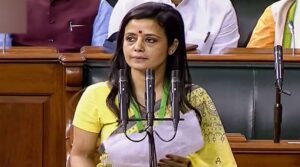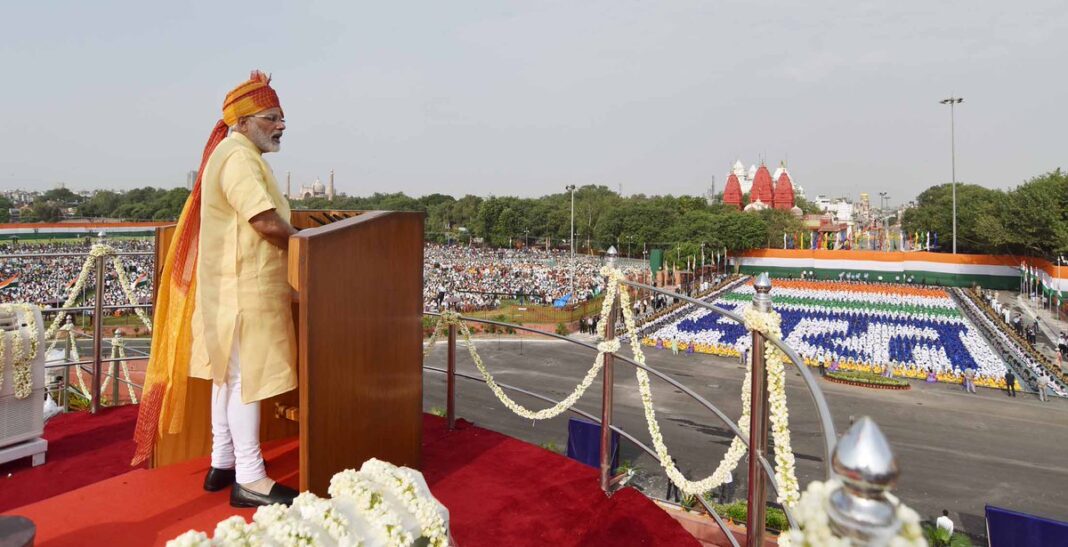INDIA. Many an armchair analyst have created a reputation by gravely connecting the dots and reading tea leaves ex post facto. They along with other experts whether in the world of business, politics, sports would be the first to acknowledge the value of timing. So, what is the timing for the politics in India?
From the bipolar cold war world of the ‘80s –‘90s, the world has increasingly become multipolar in the 21st century. The same cannot be said of the politics in India though. From a multipolar political world till 2014 we have increasingly become bipolar or unipolar with an approach that says—either you are with us or against us. The pressure on preserving the ideals that our forefathers enshrined in the constitution is on a generation that justifies every action against the spirit of the constitution, if not the letter, with a comparison to the actions of the previous governments.
Read India, US All Set To Sign A Military Pact
We are caught in a narrative warp of the two Gandhis. One, a Mahatma who gave his all for the nation with the modern politician busy dumping all their failures on his legacy, the other, a Rahul who has not done anything of note, but we are made to cower in fear of a future in which he could do something. The reality is in between, and we are at an inflection point, globally and locally. Globally, it is the US elections which will decide if the age of the democratically elected autocrat is over. Locally we would have chosen between a singular idea of our nation or one that our forefathers forged for us with a bloody price to the British Empire.
In the crushing process between the choices, what we are witnessing is not a unification of the country based on a religious ideology or hyper nationalism but a fragmentation of society between the rich and the rich. We have been mute spectators to the misery of the migrants set starkly against the celebration on two of the richest Indians climbing to greater heights on the world billionaire charts. People watch as their elected representatives become richer and richer as can be seen from the increasing list of Crorepati MPs and MLAs. It is thus in this backdrop that two of the poorest and most densely populated states of India go into elections: West Bengal and Bihar, the states that were the flag bearers of all major political revolutions including against the Moguls and the British. This may just be that watershed moment in recent history where the powers that be are humbled by the very democracy that put them in place.
While the elections in Bihar are over the next fortnight, it is in Bengal that has the ruling party readying for its bloodiest fight. A fight in the name of religious ideology. This is much tougher than Bihar where it is easy to portray the opposition leader as entitled, elitist, illiterate, from a corrupt family, etc., conveniently forgetting that they were allies not so long ago. Bihari identity is much divided, unlike Bengal.
We have seen this movie before, a powerful central government mowing down everything in front of them, only coming to an abrupt halt in the face of people power. For far too long regional leaders of India like a Mulayam, Lalu, Jayalalitha, Mayawati, the Thackeray, the Badals, Kanshi Ram, Deve Gowda, et al have not been given their due and treated as a necessary irritant that is to be tolerated. Their ability to connect to the poor and masses and give them the assurance of their voice in the national scheme of things is greatly undervalued. They are portrayed as the classic stereotypical politician who crashed into an old boy’s club. Ridiculed and tolerated only when convenient to share power and discarded mercilessly at the first opportunity. Not that many of them have built anything of value past their immediate families. If Lutyens’ Delhi made them feel like outsiders, the latest dispensation has made them outcasts.

Why is religious ideology such a strategy in Bengal and not so much in Bihar? For that you must see what or rather who they are up against. Mamata Banerjee. Here is a woman who probably is the only woman Chief Minister who made it on her own and not on the coat tails of dynasty, past royalty, or a consort of a powerful male leader. In fact, she is single, much like the Prime Minister. A mass leader who brought down the longest serving elected communist government in the world. Even prior to the Chief Ministership, she had served under both major political groups in the country as a central minister. With a master’s degree in Islamic studies and a law degree she is not your classic rustic politician. Her own personal austerity leaves no room for personal attacks. Not that there haven’t been scams, but there’s nothing to link her. Here is a Chief Minister who paints and writes poetry as adeptly as she gives fiery roadside speeches. One who has attracted talent of the calibre of Derek O’Brien and Mahua Moitra and sent them to parliament and is yet to show signs of promoting only her own family members. This is what makes her so hard to attack and make no mistake she is feared, hence the religious card.
The cultural unification that is being subtly and not so subtly being enforced through language, religion, single party, etc. is dangerous. India was never united in that manner throughout history. India’s strength is in its inclusion, its diversity, its pluralism, its secularism and embracing of different political beliefs. We have done a lot of things right, giving women the power to vote before many other major countries, allowing communism to function when they were being hounded and killed in other countries, facilitating smooth transfer of power, maintaining the balance between the government, judiciary and the armed forces and above all allowing mass leaders with the voice of the poor to respectfully operate on equal footing. It is rulers who were tolerant and benevolent who are recalled with the title of “The Great”. Akbar and Ashoka, the only two who ruled as close to what the map of India looks like today. Both of them as well as the British left a lot of the stronger rulers in the east and the south largely independent. The rush to forge a nation just 70 odd years after 600 plus kingdoms were amalgamated into one, on a single notion of nationhood, is what is going to be tested in the elections of the next few years.
Will the people of India exercise their power or chant Namo, Namo, Namo… the nation waits with bated breath to know.




Comments are closed.